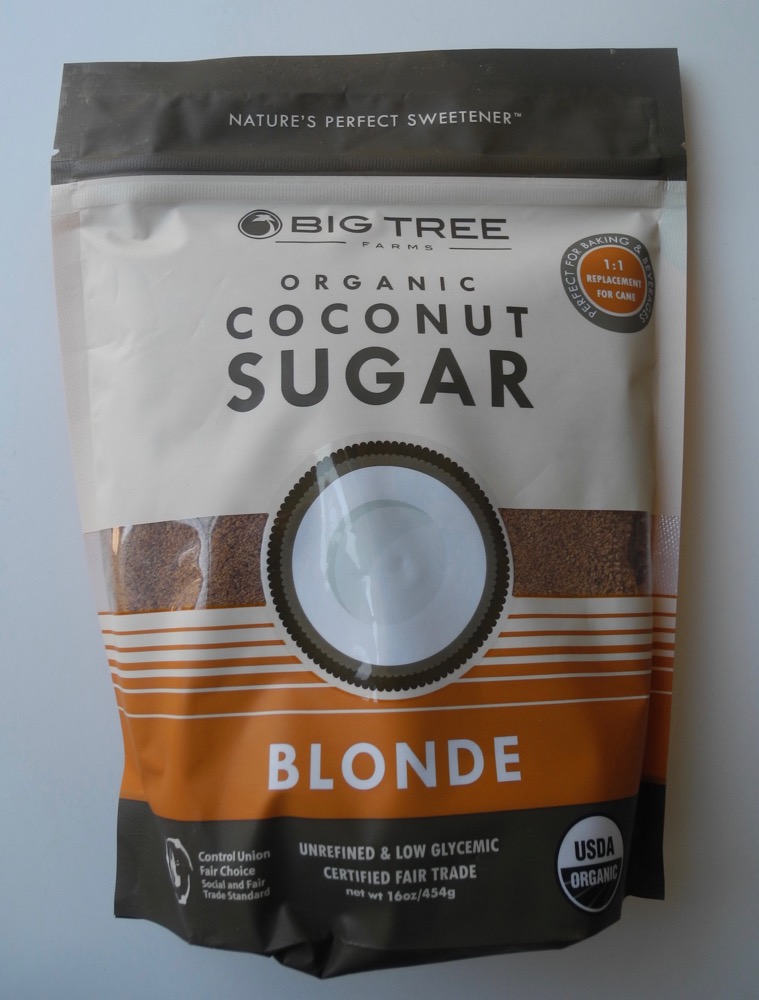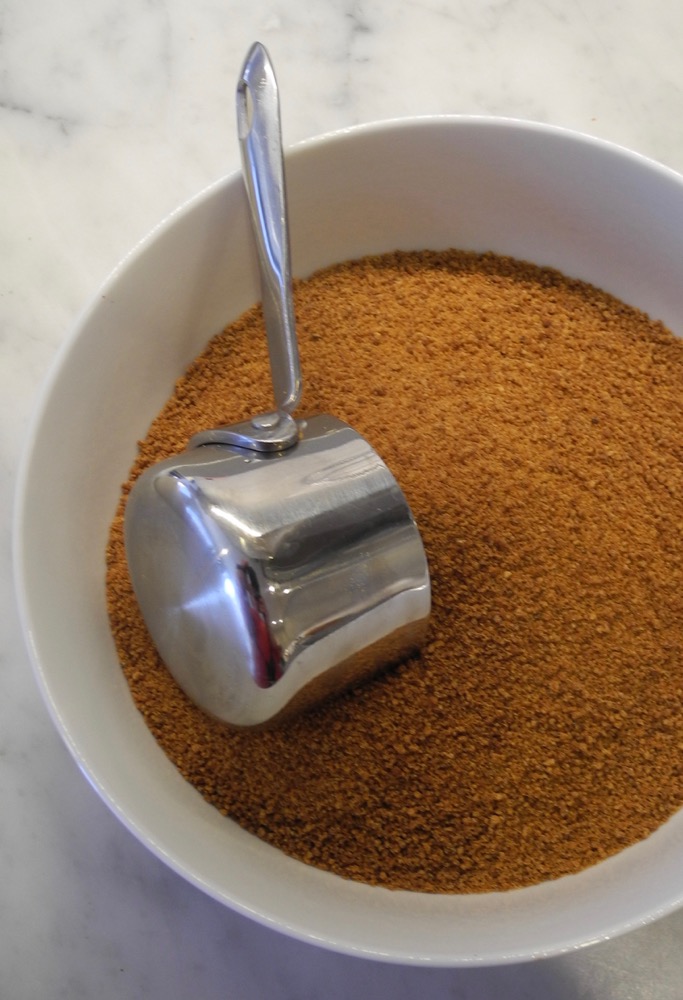Palm Sugar 101
I was recently working with a new cookbook that called for palm sugar and I was stumped. Palm sugar? Never heard of it.
Within a week, I came upon it again -- first in an article and then in another two recipes. Then it was in the food section of The Times as a featured flavor of a new line of simple syrups made by a chef in Brooklyn.
Palm sugar seems to suddenly be everywhere. So what's the deal?
Also called "coconut sugar," palm sugar is made from a sap extracted from the flowers of coconut or date palm trees. The sap is boiled into syrup and sold either in that form or crystallized and packaged as granulated or blocks of sugar.
The growing popularity of palm sugar is due to two factors: its flavor and its health advantages.
First, its taste. In granulated form, palm sugar looks, tastes and dissolves like brown sugar without being quite so sticky. It also looks a bit like turbinado or demerara sugar but it's not as shiny or crystal-y. Some liken palm sugar's flavor to butterscotch or caramel, or like brown sugar without the metallic after-taste. Its low melt temperature and extremely high burn temperature mean it can be used in both cooking and baking in place of cane sugar.
In the case of palm sugar, a cup of sugar is a cup of sugar. So it's easy to switch out white granulated sugar and replace it with an equal amount of palm sugar. With a perfect replacement ratio of 1:1, a cup of palm sugar can be used interchangeably with a cup of white or brown sugar.
However, because palm sugar is dark brown, it will color whatever you are making. Plus, as I learned recently, if you try to caramelize palm sugar, you can't see it turn golden brown -- the best way to know that the sugar has caramelized -- because the palm sugar starts out at that color. Thus the only sure way is to use a candy thermometer and let the sugar cook until it reaches 320° F (160° C), then take it off the heat and add the cream or whatever liquid you're using for the caramel.
And the price? Compared to Domino, palm sugar is very costly. In my search for it, organic palm sugar cost about $8 to $10 a pound. More grocers are now carrying it, but you're going to most easily find it at health food/organic markets, at Whole Foods, and at Amazon.
The second reason people are interested in and using palm sugar is for its reported health advantages over white sugar.
There is a growing excitement about its high potential as a healthy sugar substitute. It is not low calorie -- similar to sugar, a teaspoon has 15 calories and 4 grams of carbohydrates. But unlike sugar, which is nutritionally bankrupt, palm sugar contains potassium, calcium, magnesium, zinc, and more than a dozen amino acids.
What has most excited folks is palm sugar's relatively low glycemic index, with some tests putting it at nearly half that of corn syrup. Or as one test concluded, about the same as cooked carrots. But we all know how easy it is to get convinced of health benefits claimed by the folks who are selling the products. So I turned to the American Diabetes Association. This is what their website says about palm sugar:
"Manufacturers of coconut palm sugar boast its low glycemic indes, claiming it is a better choice for people with diabetes than regular sugar. Glycemic index (GI) is a measure of how a food raises blood glucose (or blood sugar) compared to a reference food (usually glucose or white bread). In the United States, we do not do official GI testing. So, GI numbers for the same food can differ depending on your source."
Not really helpful. Perhaps it's just too much to wish for a tasty sweetener that avoids most of the perils of sugar.
But maybe it doesn't have to be a perfect sweetener. Maybe palm sugar is worth using simply for its rich flavor.
Finally, health and flavor aside, there are the inevitable politics.
Palm sugar is grown and produced in third world countries, primarily Indonesia, Malaysia, Cambodia, Burma, Philippines, Thailand, and other parts of Southeast Asia. There are claims that coconut farmers being exploited by western food producers as palm sugar becomes a hot product; that coconut crops will be harmed by a rising demand for flower nectar (it's argued that you can harvest either the nectar or the coconuts but not both); and that some palm sugar brands are sullied by mixing in cane sugar and additives so the buyer must beware. Some brands are labeled Fair Trade. Others are Non GMO and USDA Organic. Still others make no claims at all.
Palm sugar seems to be no different than other emerging food products in that it's nearly impossible to figure out what's right and what's good. Once again, trying to eat for health and flavor is a challenge. So as with most processed foods, read the label carefully.

